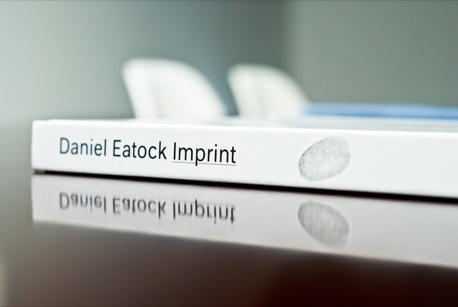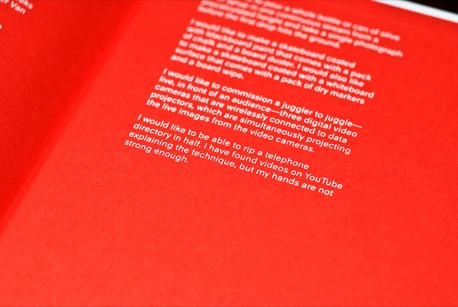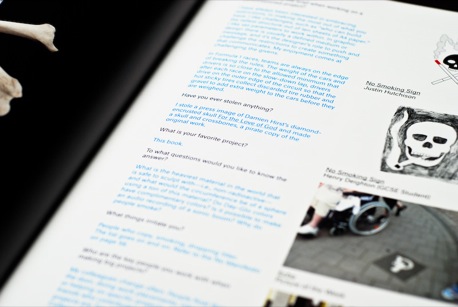Daniel Eatock - Imprint
I have been wanting to write the review of Daniel Eatock’s book, Imprint, (Amazon: US



(Click to enlarge)
Imprint is a collection of Eatock’s works spanning 1975–2007. Yet it is a book that could only have really existed in our age of networked, participatory media. There is a distinctly web and blogger feel to the collection of oddities grouped together by Eatock’s editorial eye. A large part of the content is made up of Thank You Photographs, a section of Eatock’s web site the exhibits pictures his readers have sent to him. These are more than just fan mail – the participants are executing the visual and editorial algorithms that Eatock has set up through his work. The results could happily be tagged and act in much the same way as a cleverly thought-out Flickr pool, but his collection of them somehow adds an editorial process that a database lacks.
(Click to enlarge)
Opening with a long and entertaining interview with Eatock and interspersed with insightful captions, Imprint is a glimpse into a remarkable mind. Clearly Eatock is obsessive, whether listing ideas, facts, images or seeing an idea through to its extreme end, but there is such a sharp intelligence to the obsessiveness that it is hard not to be infected by it. No wonder the participatory projects do so well.
(Click to enlarge)
Eatock studied at Ravensbourne College of Design and Communication and later at the Royal College of Art, but has long harboured a desire to dematerialize the graphic process, “exploring objectivity, systems, and concepts, and remove as many aesthetic decisions from the design process as possible”. He describes his days a high school when a schoolmate, Daniel Forster, was making “amazing pen drawings on the beach”.
“I am competitive, and since I knew I could not compete with Dan’s drawing ability, I understood that to be happy, I had to invent a creative way around the problem of making things look beautiful. So while Dan was drawing perfect renderings of the beach, I drew two straight lines on a page, dividing it into thirds. I wrote ‘sky’ in the top third, ‘sea’ in the second, and ‘sand’ in the bottom third.
“I realized in that instance that the craft and skill of drawing can be overcome with an idea. This simple realization has changed the way I approach almost everything I make. If something does not come naturally, I search out an alternative way to respond to the problem.”
(Click to enlarge)
Of course, the objectivity Eatock tries to bring into the work ends up carrying his signature way of seeing the world and it is this that makes his work so interesting. It is full of circularities (Eatock enjoys self-referential scenes and objects as well as drawing circles) and systems, inquiry and double-takes. Imprint is at times hilarious and others a confirmation that a simple idea, well-executed or, indeed, executed at all, has enormous potency. “My obsession,” he says, “is to find the sense in nonsense and nonsense in sense.”
(Click to enlarge)
Despite the underlying schemes, lists and processes that drive his work (and life, it seems), there remains something slippery about Imprint. Its constant self-and cross-referencing works across its text, images and layout and I found myself continually flipping back and forth trying to grasp the big picture, but it remains infuriating just out of reach. Reading it is like surfing through StumbleUpon, but with a great deal more beauty. My guess is that Eatock has the whole thing somehow clearly stored in his quite remarkable brain – a human Google cache tracking visual relationships in the everyday world.
Despite being difficult to describe, Imprint makes so much sense when it is in your hands that it has become one of my favourite books of inspiration and reference.
Imprint is published by Princeton Architectural Press (look for the video of Eatock putting his thumbprint on every book spine). If you would like to support The Designer’s Review of Books you can buy it from Amazon (US










